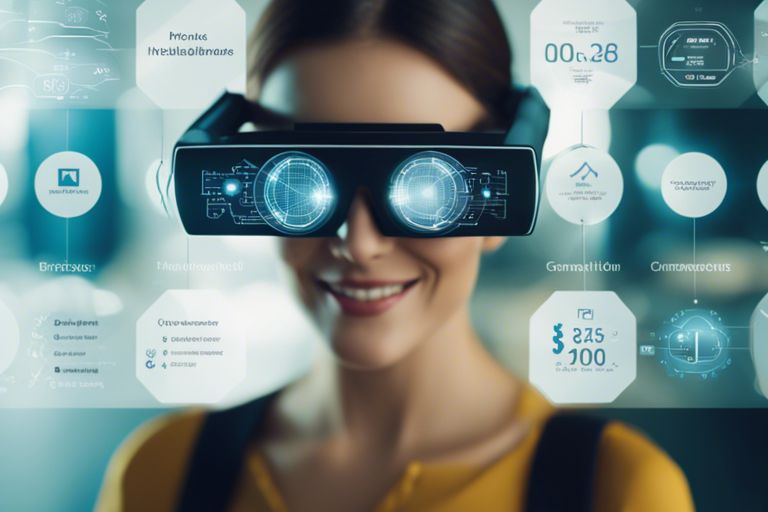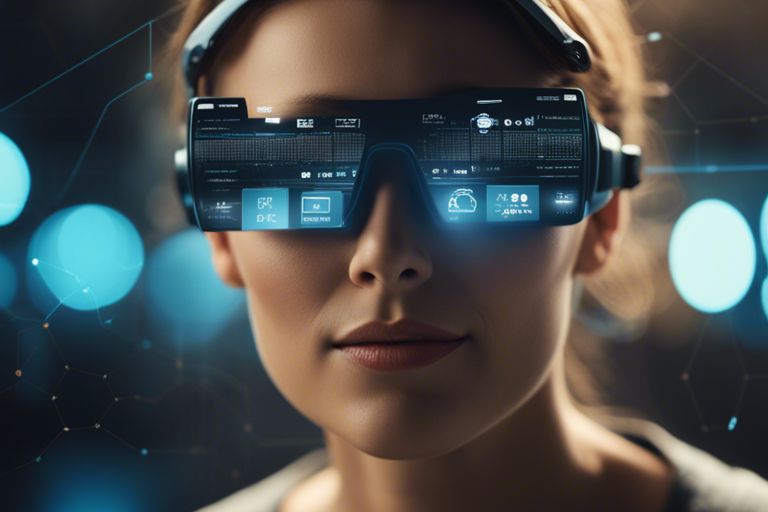Augmented Reality – How Is AI Powering The Next Level Of Interactive Information Overlay?
Revolutionizing the way we perceive reality, Augmented Reality (AR) is at the forefront of technological advancements. By integrating Artificial Intelligence (AI) into AR systems, a new era of interactive information overlay is emerging. AI algorithms analyze real-time data and enhance user experiences by combining virtual elements with the physical world in real-time. This fusion allows for seamless integration of digital information into our surroundings, unlocking a myriad of opportunities for education, entertainment, and even commerce. As we delve into the potential of this technology, it is crucial to understand how AI is driving the evolution of AR and the impact it will have on our daily lives.
The Mechanics of Augmented Reality and AI
Image Recognition and Processing
To fully understand the capabilities of augmented reality (AR) powered by artificial intelligence (AI), it is crucial to delve into the mechanics behind image recognition and processing. The integration of AI in AR allows for the identification and analysis of real-world objects and environments in real time.
To achieve accurate image recognition and processing in AR, AI algorithms rely on deep learning techniques such as convolutional neural networks (CNNs) and object detection models. These algorithms are trained on vast amounts of data to enable them to recognize patterns and features within images, enabling AR applications to overlay digital information seamlessly onto the physical world.
AI Algorithms for Real-Time Overlay
Overlay Real-time overlay in AR is made possible through AI algorithms that can interpret and understand the user’s environment in the moment. These algorithms analyze live data from the device’s sensors and cameras to superimpose interactive digital content onto the user’s view, creating a truly immersive experience.
It is essential for AI algorithms used in real-time overlay to process information rapidly and accurately to ensure a seamless integration of digital content with the physical world. These algorithms play a crucial role in enhancing the user experience by providing relevant and contextual information in real time, opening up new possibilities for interactive engagement.

Applications of AI-Enhanced Augmented Reality
Education and Training
While traditional education methods have their merits, AI-enhanced augmented reality is revolutionizing the way we learn and train. AI algorithms can personalize learning experiences by analyzing the behavior and performance of each student in real-time, providing tailored feedback and guidance. This level of individualized attention can significantly improve student engagement and comprehension.
To further enhance training programs, AI-powered augmented reality can create immersive simulations that replicate real-world scenarios. This hands-on approach allows learners to practice their skills in a safe and controlled environment, leading to more confident and competent professionals.
Navigation and Maps
For seamless navigation and mapping, AI-enhanced augmented reality offers a dynamic and interactive experience. By integrating AI technologies into AR applications, users can receive real-time, context-aware information overlaid on their physical surroundings. This enhances spatial awareness and helps users make informed decisions based on their surroundings.
For instance, AI algorithms can analyze traffic patterns, user preferences, and real-time data to recommend the most efficient route to a destination. This personalized navigation experience can save time, reduce stress, and improve overall travel experiences for users.
Retail and Marketing
Augmented reality is revolutionizing the retail and marketing industry by providing immersive experiences that blur the line between the physical and digital worlds. AI-powered AR can personalize shopping experiences by analyzing user preferences and behaviors, offering tailored product recommendations and interactive features.
Training sales associates to use AI-enhanced AR can also improve customer satisfaction by providing real-time product information, availability, and pricing. This empowers sales teams to offer personalized recommendations and enhance the overall shopping experience for customers.
Healthcare and Assistive Technology
Training healthcare professionals with AI-enhanced augmented reality can improve patient care and treatment outcomes. By simulating medical procedures and scenarios, AI algorithms can help medical professionals practice and refine their skills in a risk-free environment. This can lead to increased precision and efficiency in healthcare practices.
Market researchers are also leveraging AI-powered AR to gather real-time data on consumer behavior and preferences. By analyzing this information, marketers can create targeted campaigns and promotions that resonate with their target audience, leading to higher engagement and conversion rates.
Technology continues to advance, and the applications of AI-enhanced augmented reality are endless. By harnessing the power of AI algorithms in AR experiences, we can revolutionize industries and enhance the way we interact with the world around us. The possibilities are truly exciting.
Challenges and Future Developments
Privacy and Data Security
After the excitement surrounding the potential of augmented reality (AR) powered by artificial intelligence (AI), it’s crucial to address the challenges that come with this cutting-edge technology. Data privacy and security are of utmost concern when it comes to the implementation of AR. As AR applications collect and process vast amounts of user data, there is a growing need to ensure that this data is protected from unauthorized access and misuse.
Data encryption, secure authentication methods, and stringent data access controls must be integrated into AR systems to safeguard user information. As AR becomes more personalized and integrated into daily life, the risk of data breaches and privacy violations also increases. Striking a balance between providing immersive AR experiences and protecting user privacy will be a continuous challenge for developers and businesses in the future.
Hardware and Software Limitations
One of the critical challenges in advancing AR technology lies in overcoming hardware and software limitations. While modern devices have made significant strides in processing power and graphic capabilities, there is still a need for more efficient hardware to support seamless AR experiences. Software optimization and compatibility also play a crucial role in delivering a smooth AR experience across various devices and platforms.
One of the main hurdles in enhancing AR hardware is achieving lightweight, comfortable wearable devices that can deliver high-quality AR content without causing user discomfort. Additionally, software developers need to work on creating more versatile AR applications that can adapt to different environments and user interactions, pushing the boundaries of what is currently possible in the AR space.
Plus more advancements are needed in sensor technology, gesture recognition, and real-time rendering to overcome the existing limitations and unlock the full potential of AR for various industries.
The Potential for Ubiquitous AR
Data from AR devices can provide valuable insights into user behavior, preferences, and interactions, revolutionizing the way businesses connect with customers. As AR technology becomes more ubiquitous, the opportunities for personalized marketing, immersive education, and enhanced productivity are limitless.
Software developers and businesses must navigate the challenges of scaling AR applications across multiple devices and environments while ensuring seamless integration with existing systems. By leveraging AI to analyze user data and optimize AR experiences, companies can deliver tailored solutions that meet the evolving demands of consumers in the digital age.
Final Words
Ultimately, Augmented Reality is revolutionizing the way we interact with information, and AI is the driving force behind its advancement. By harnessing the power of artificial intelligence, AR is able to provide users with a more immersive and interactive experience, overlaying real-world objects with digital information in real-time. As AI continues to evolve and improve, we can expect to see even more innovative applications of AR in various industries, from gaming and entertainment to education and healthcare. The future of interactive information overlay is bright, thanks to the powerful combination of Augmented Reality and Artificial Intelligence.
FAQ
Q: What is Augmented Reality (AR)?
A: Augmented Reality (AR) is a technology that overlays digital information such as images, videos, or 3D models onto the real world, enhancing the user’s perception of reality.
Q: How is Artificial Intelligence (AI) used in Augmented Reality?
A: Artificial Intelligence (AI) is used in Augmented Reality to enhance interactivity and personalization by analyzing user behavior, recognizing objects in the environment, and delivering real-time contextual information.
Q: What are the advantages of combining AI and AR?
A: Combining AI and AR allows for more intelligent and dynamic content overlays, personalized user experiences, improved object recognition, and better contextual relevance in delivering information.
Q: How does AI-powered AR benefit industries such as healthcare and education?
A: In healthcare, AI-powered AR can assist in medical training, surgical procedures, and patient care. In education, it can provide interactive learning experiences, virtual field trips, and personalized tutoring.
Q: What are some challenges in the implementation of AI-powered AR?
A: Challenges in implementing AI-powered AR include ensuring privacy and data security, addressing ethical concerns such as bias in AI algorithms, overcoming technical limitations, and providing the necessary infrastructure for seamless integration.
![]()












